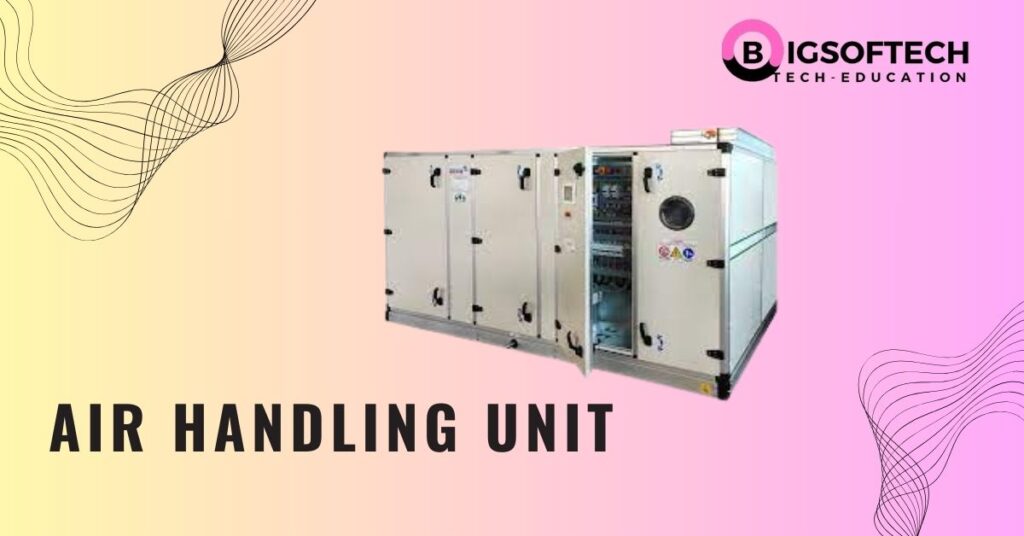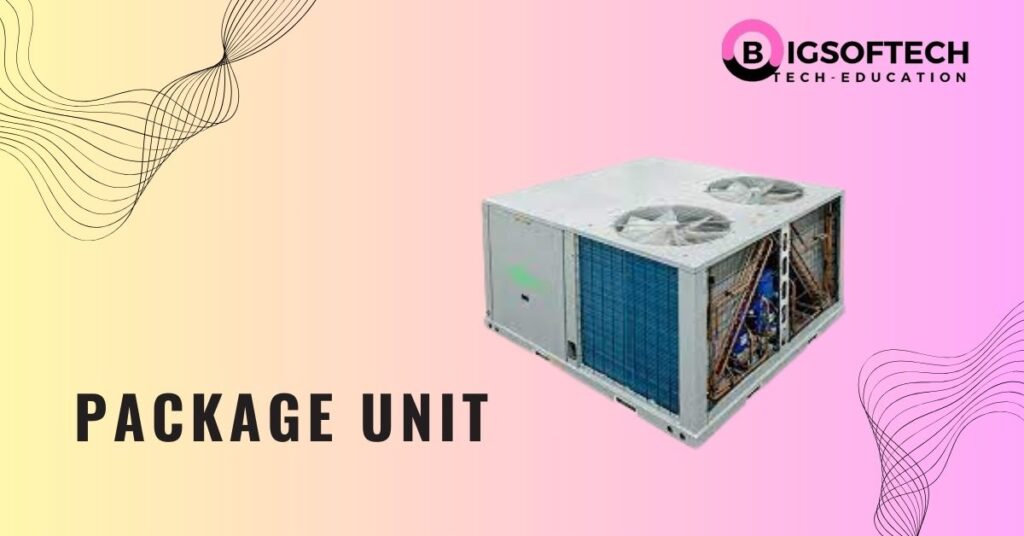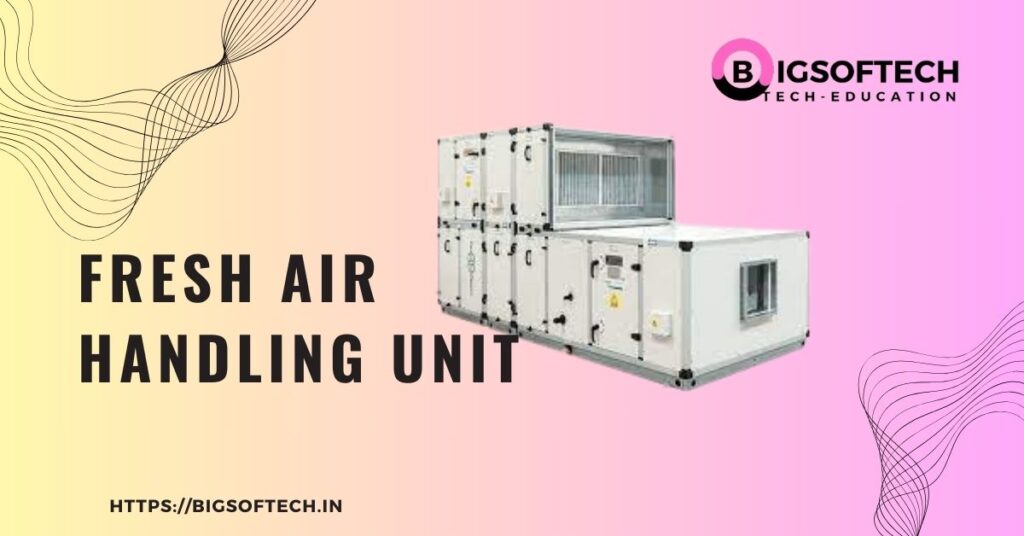In the realm of heating, ventilation, and air conditioning (HVAC), the term Air Handling Unit (AHU) frequently surfaces. But what is AHU exactly, and why is it so crucial in maintaining indoor air quality and comfort? An AHU is a vital component of any HVAC system, playing a central role in the regulation and circulation of air within buildings. From office spaces to hospitals, and shopping malls to industrial facilities, AHUs ensure that the air we breathe is clean, conditioned, and at the right temperature.
Understanding what is AHU involves delving into its various components, functions, and types. This comprehensive guide will explore the definition of an AHU, its key components, working principles, and the significant role it plays in HVAC systems. Whether you’re an HVAC professional, a facility manager, or simply someone interested in indoor air quality, this article will provide valuable insights into the world of Air Handling Units.
By the end of this guide, you’ll not only grasp what is AHU but also appreciate its importance in creating comfortable and healthy indoor environments. Let’s embark on this journey to uncover everything you need to know about Air Handling Units.
Understanding AHU: An Overview
Definition of AHU
An Air Handling Unit (AHU) is a fundamental component of an HVAC system responsible for regulating and circulating air. It works by drawing in outside air, filtering it, heating or cooling it as needed, and then distributing the conditioned air throughout the building. AHUs play a critical role in maintaining indoor air quality and comfort.
The Role of AHU in HVAC Systems
AHUs are central to HVAC systems, providing the necessary airflow to ensure proper ventilation and climate control within various spaces. They are used in a wide range of settings, from commercial and industrial buildings to residential homes, ensuring that the air is clean, fresh, and at a comfortable temperature.
Key Components of an AHU
Fans and Blowers
Fans and blowers are essential for moving air through the AHU. They draw in fresh air from the outside and push it through the unit to be filtered, conditioned, and distributed throughout the building.
Heating and Cooling Coils
These coils are responsible for adjusting the temperature of the air. Heating coils warm the air, while cooling coils lower the temperature, ensuring that the indoor environment remains comfortable regardless of the outside weather conditions.
Filters
Filters are crucial for removing dust, pollen, and other contaminants from the air. They ensure that the air circulated by the AHU is clean and safe to breathe.
Humidifiers and Dehumidifiers
Humidifiers add moisture to the air, while dehumidifiers remove excess moisture. These components help maintain optimal humidity levels, which is important for both comfort and health.
Dampers
Dampers control the flow of air within the AHU, allowing for precise regulation of air distribution. They can be adjusted to manage the amount of air entering and exiting the unit.
Types of fans used in AHUs
-
Centrifugal Fans:
- Forward-Curved Blades: These fans are known for their efficiency in moving large volumes of air at low pressures. They are commonly used in applications where a steady and consistent airflow is required, such as in ventilation systems.
- Backward-Curved Blades: Offering higher efficiency compared to forward-curved blades, backward-curved blade fans are suitable for applications that demand higher pressures. They are often used in AHUs for their ability to handle increased resistance in the ductwork.
- Radial Fans: Also known as paddle wheel fans, radial fans are designed for high-pressure applications. They are suitable for overcoming significant resistance in ducts and filters, making them valuable in AHUs with complex air distribution systems.
Axial Fans:
- Tube Axial Fans:Tube axial fans combine the features of axial and centrifugal fans to achieve a balance between airflow volume and pressure, making them suitable for applications in AHUs where effective air distribution requires a moderate level of pressure.
Types of coils used in AHUs
Heating Coils:
-
- Electric Heating Coils: These coils use electricity to generate heat. Electric heating coils are commonly used in AHUs for precise temperature control, especially in applications where a quick response to changing conditions is necessary.
- Hot Water Coils: Hot water coils utilize circulating hot water to transfer heat to the air passing through the AHU. They are energy-efficient and are often employed in conjunction with boilers as a cost-effective heating solution.
Cooling Coils:
-
- Chilled Water Coils: Chilled water coils use cold water to absorb heat from the air, effectively cooling it. These coils are a common choice for AHUs in air conditioning systems due to their efficiency and ability to maintain consistent cooling performance. these coils is also used in FAHU
- Direct Expansion (DX) Coils: DX coils, also known as evaporator coils, contain a refrigerant that evaporates to absorb heat from the air. This type of coil is commonly used in split-system air conditioners and certain AHUs to provide cooling.
The importance of air filtration
-
Indoor Air Quality (IAQ):
- Air filtration is instrumental in improving indoor air quality (IAQ) by capturing and removing particulate matter, dust, allergens, and pollutants from the incoming air. This is especially crucial in environments where occupants spend extended periods of time, such as homes, offices, and healthcare facilities.
-
Health and Well-Being
- Effective air filtration helps reduce the concentration of airborne contaminants that can have adverse effects on respiratory health. By removing allergens and pollutants, filtration contributes to a healthier indoor environment, minimizing the risk of respiratory issues and allergies.
-
HVAC System Protection:
- Air filtration protects the HVAC system components, including fans, coils, and ductwork, from the accumulation of debris and contaminants. This extends the lifespan of the equipment and reduces the frequency of maintenance, contributing to the overall efficiency and longevity of the system.
-
Energy Efficiency:
- Cleaner air translates to more efficient HVAC system performance. Filtration reduces the accumulation of dirt on coils and other components, promoting optimal heat exchange and airflow. This, in turn, enhances energy efficiency, leading to cost savings and reduced environmental impact.
How does an AHU work?
Understand the working principle of ahu.
The Process of Air Handling
The air handling process starts with the AHU drawing in outside air. This air passes through filters to remove contaminants. It then moves overheating or cooling coils to adjust its temperature. Finally, the conditioned air is distributed throughout the building via ductwork.
The Role of AHU in Air Quality Control
AHUs play a vital role in maintaining indoor air quality by filtering out pollutants and ensuring a constant supply of fresh air. This is particularly important in environments such as hospitals and laboratories, where air quality is crucial.
Energy Efficiency in AHU Operations
Modern AHUs are designed to be energy-efficient, using advanced technologies to reduce energy consumption while maintaining optimal performance. This includes variable speed fans, energy recovery systems, and smart controls.
Air Intake and Filtration:
-
- The process begins with the intake of ambient air from the external environment. Before entering the AHU, the air passes through filters. These filters capture and remove particles, dust, and contaminants, improving the quality of the incoming air and preventing them from circulating within the building.
Conditioning of Air:
-
-
- The conditioned air passes through heating and/or cooling coils within the AHU. The type of coils used depends on the system’s requirements. Heating coils raise the air temperature while cooling coils lower it. This step is crucial for achieving the desired temperature and humidity levels in the conditioned air.
-
Humidification or dehumidification:
-
- In some cases, AHUs include components for humidification or dehumidification, ensuring that the air maintains an optimal moisture level. This is especially important in climates with varying humidity levels or in applications where precise control over humidity is necessary.
Air Mixing and Distribution:
-
- The conditioned and treated air is then mixed to achieve a uniform temperature and humidity. Fans within the AHU play a key role in circulating the air and distributing it through a network of ducts. The fans ensure that the conditioned air reaches different spaces within the building in a controlled and efficient manner.
Dampers for Airflow Control:
-
- Dampers, adjustable plates, or valves are strategically placed within the air handling unit ductwork. These dampers regulate the flow of air, allowing for precise control over the volume and direction of airflow. This ensures that conditioned air is distributed evenly to meet the specific requirements of different zones.
Exhaust and return air:
-
- In addition to supplying conditioned air, AHU facilitates the exhaust of stale indoor air. The return air from the building is mixed with fresh outdoor air, and the cycle begins again. This continuous exchange helps maintain air quality and balance within the building.
Monitoring and Control:
-
- Modern AHUs are equipped with sensors and control systems to monitor various parameters, such as temperature, humidity, and air quality. These systems enable real-time adjustments to ensure that the conditioned air meets the desired standards and that the HVAC system operates efficiently
Type of Air Handling Unit (AHU)
Packaged Air Handling Unit (AHU):
- Packaged Air Handling Unit is a self-contained unit with all components, including fans, coils, filters, and controls, housed in a single casing. They are compact and typically installed on rooftops or in dedicated equipment rooms. Packaged AHUs are convenient for applications with limited space.
Single-Zone and Multi-Zone Air Handling Units: (AHU)
- Single-zone AHUs serve a single space or zone and are suitable for smaller buildings. Multi-zone AHUs, on the other hand, are designed to serve multiple zones independently. Multi-zone AHUs offer more precise control over different areas within a building.
Energy Recovery Ventilators (ERVs)
- Energy Recovery Ventilators (ERVs) enhance energy efficiency by integrating energy recovery systems to capture and reuse energy from exhaust air, thereby preconditioning incoming air with the energy derived from outgoing air. They find application in environments prioritizing energy conservation.
Ceiling-Mounted Air Handling Unit.
- Ceiling-mounted AHUs, installed in the ceiling space, are compact units ideal for situations with limited floor space. They efficiently distribute air to occupied zones.
Maintenance and Troubleshooting of Air Handling Unit
Maintenance Tips of AHU:
Filter Replacement:
-
- Regularly inspect and replace air filters. Clogged filters can reduce airflow, strain the fan motor, and compromise indoor air quality.
Coil Cleaning
-
- Clean heating and cooling coils to maintain their efficiency. Accumulated dirt on coils can reduce heat transfer and cooling capacity.
Fan Maintenance
-
- Check the fan blades for dirt and balance. Imbalanced or dirty blades can lead to increased energy consumption and reduced airflow.
Belt Inspection
-
- Inspect and adjust the belts connecting the fan and motor. Worn or misaligned belts can affect fan performance.
Ductwork Inspection
-
- Regularly inspect ductwork for leaks, blockages, or signs of wear. Damaged ducts can result in energy loss and uneven air distribution.
Motor and Drive Inspection
-
- Check motors and drives for proper lubrication and alignment. Malfunctioning motors can lead to system failures.
Humidifier Maintenance:
-
- If equipped with a humidifier, clean and disinfect regularly to prevent mold growth and ensure proper humidity control.
Control System Check:
-
- Verify the accuracy and functionality of the control system. Calibrate sensors and check for any programming issues.
Troubleshooting:
Insufficient Airflow:
-
- Check for clogged filters, dirty coils, or obstructions in ductwork. Inspect and adjust dampers for proper airflow.
Uneven Temperature Distribution:
-
- Inspect the ducts for blockages or leaks. Verify that dampers are adjusted correctly to balance air distribution.
Noisy Operation:
-
- Inspect fan blades for dirt or damage. Check for loose components, such as belts or fasteners, contributing to noise.
High energy consumption:
-
- Evaluate the system for dirty coils, clogged filters, or misaligned components that can reduce efficiency. Check the control system for optimal settings.
Water Leaks:
-
- Inspect coils, drain pans, and condensate lines for leaks. Ensure proper drainage and address any blockages.
Faulty motor or drive:
-
- Check motors and drives for unusual noises, overheating, or signs of wear. Verify proper lubrication and alignment.
Control System Issues:
-
- Troubleshoot the control system for sensor malfunctions, incorrect programming, or communication errors.
Humidity control problems:
-
- Inspect humidifier components for proper functioning. Adjust settings and check for any issues with the humidistat.
Conclusion
An air handling unit (AHU) is a critical component of an HVAC system. It is responsible for circulating, filtering, and conditioning air within a building. AHUs play a vital role in maintaining indoor air quality, regulating temperature and humidity levels, and ensuring the comfort and safety of building occupants.



